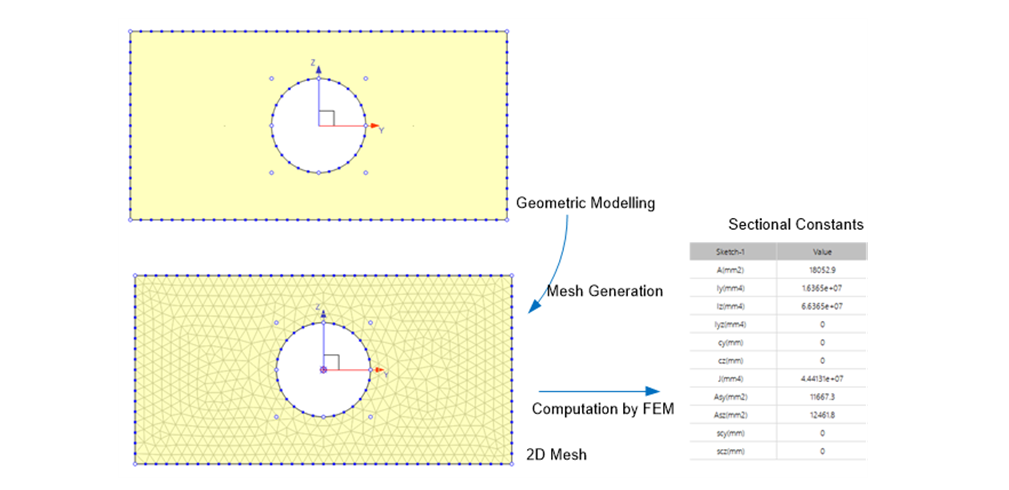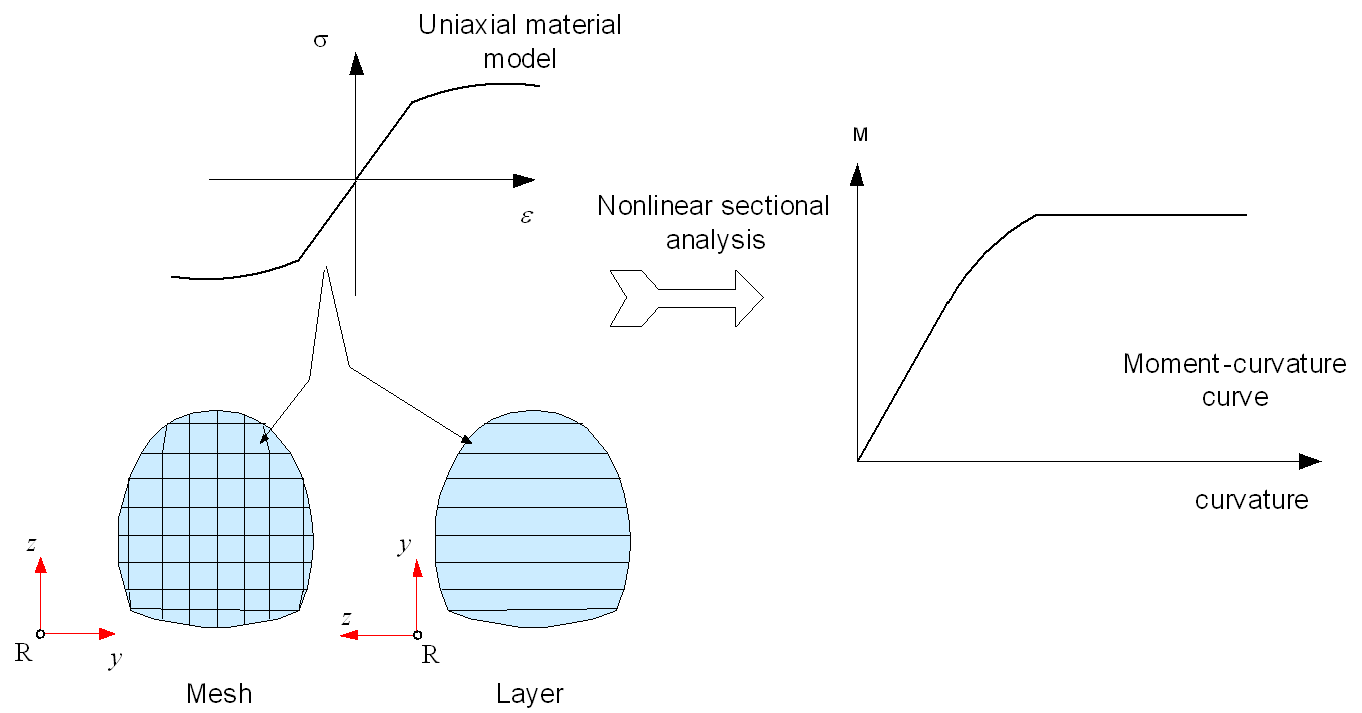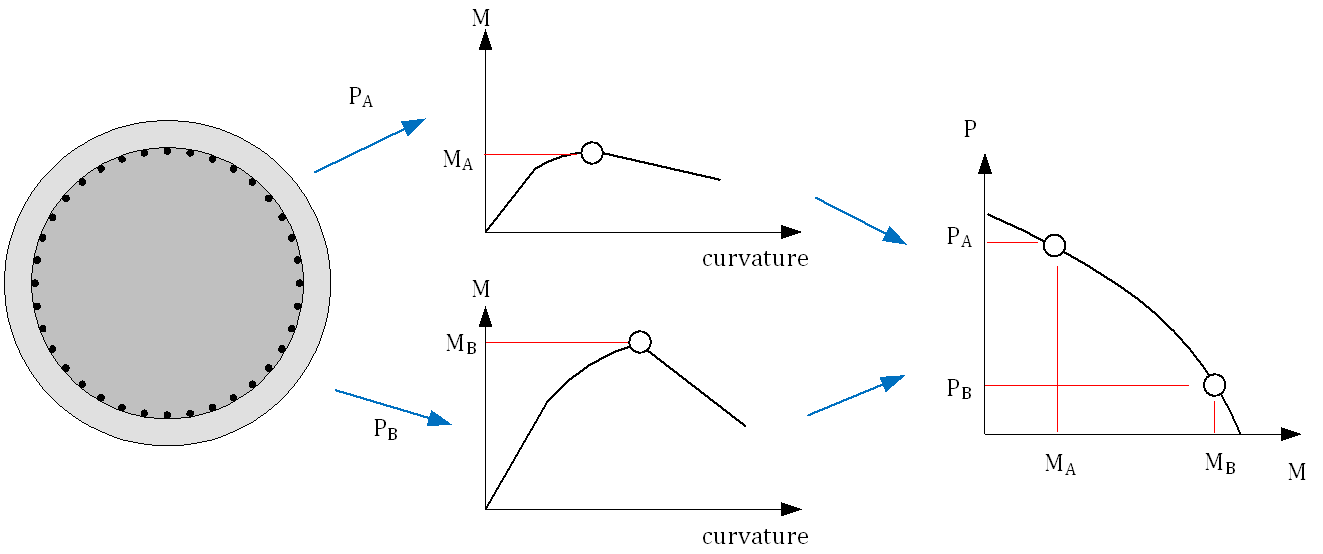Overview
The hfSectionAnalyzer and hfSectionVisualizer programs from the Hyfeast product line are designed to calculate sectional constants and perform nonlinear sectional analysis for arbitrary-shaped beam cross-sections.
- hfSectionAnalyzer: A command-line program for calculating sectional constants and performing nonlinear sectional analysis.
- hfSectionVisualizer: A preprocessing and postprocessing program for hfSectionAnalyzer.
Calculation of Sectional Constants for Arbitrary-Shaped Sections
- Calculates sectional constants such as area, second moment of area, centroid, torsional constant, and shear area.
- The torsional constant and shear area are calculated through finite element analysis of a 2D potential problem.
- After modeling the section with hfSectionVisualizer, a finite element mesh is generated, and sectional constants are calculated.

Fig. 1. Computation of Sectional Constants
Nonlinear Sectional Analysis for Arbitrary-Shaped Sections
- Nonlinear sectional analysis can be performed for various cross-sections such as reinforced concrete or prestressed concrete beams or columns, and FRP-strengthened beams or columns.
- The supported material models include linear elasticity, plasticity, and concrete. For plasticity and concrete models, the failure envelope can be defined using predefined functions or multiple linear conditions specified in a table.
-
The types of nonlinear sectional analysis that can be performed are as follows:
- Analysis to find the corresponding axial strain and curvature for a given axial force and moment (NM analysis)
- Analysis to find the corresponding axial strain and moment for a given axial force and curvature (NK analysis)
- Analysis to find the corresponding axial force and curvature for a given axial strain and moment (EM analysis)
- Analysis to find the corresponding axial force and moment for a given axial strain and curvature (EK analysis)
-
These analyses can be performed sequentially, and pretension and post-tension forces can be applied.
Fig. 2 illustrates the concept of deriving the moment-curvature curve by setting the axial force to zero and performing NK analysis. The PM diagram necessary for section design can be obtained by calculating the moment-curvature curves under various axial force conditions and determining the moment at failure (i.e., the maximum moment) (see Fig. 3).

Fig. 2. Nonlinear Sectional Analysis

Fig. 3. Computation of PM Diagram